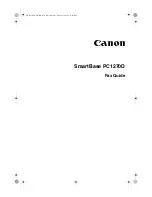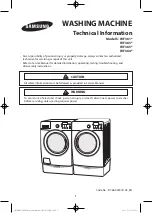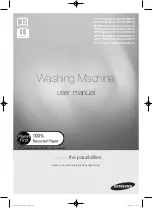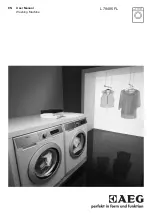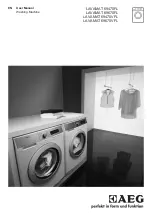
9
CLEANING TIPS
•
Check the condition of the carpeting. If the carpet is loose, heavily soiled, stained,
spotted or badly worn, point this out to the person in charge.
•
Locate an inconspicuous spot on the area to be cleaned. Test carpet for
colorfastness before proceeding. Pour the concentrated cleaning solution on the
spot, cover with a white towel and place a heavy object on top to absorb the
cleaning solution. Wait 10 minutes for any reaction to take place. Remove weight.
If there is no color transfer, it should be safe to clean.
•
Remove the furniture from the area to be cleaned. Large pieces can be moved to
opposite end of the room from where you start cleaning and replace when it is
completed. After cleaning carpet, place a small square of aluminum foil or 6 mil poly
square under the furniture legs to prevent moisture from damaging the finish or
rusting the metal glides.
•
Clean the area first with a Clean-Air Carpetkeeper, upright vacuum. Do not use the
Marathon as a dry vacuum! Heavily soiled carpet or areas of concentrated foot
traffic should be treated with recommended pre-spotting or pre-spray chemicals,
using a hand spray trigger bottle or pump up sprayer. Do not allow any spotter or
pre-spray to dry on the carpet.
•
Identify the type of carpet fiber to be cleaned. Most commercial carpet fibers in use
are nylon or acrylic based. Best results in cleaning would be obtained if hot water is
used to clean these types of fibers. On the other hand, hot water could shrink
natural fiber carpeting, like wool and cotton in particular. Exercise caution when
cleaning natural fibers. Use cool water test for colorfastness and apply the least
amount of cleaning solution possible.
•
Plan your cleaning route. Always try to have the cord to the right of the Marathon
extractor so you are working away from the cord. Operate the extractor in parallel
passes. Clean the perimeter last. Turn “off” spray switch in turns to conserve
cleaning solution
.
•
To decrease dry time, go over the carpet without pressing carpet spray switch. To
further decrease the drying time, use the Windshear 3000 Carpet Blower.
•
When running the extractor, do not overfill the recovery tank. Do not allow the water
level to rise above the clear dome on top of the recovery tank.
•
If the spray jets become clogged, remove the spray bar assembly or the individual
spray tips and soaks them in a mild acid or anti-browning chemical to dissolve
normal alkaline chemical buildup.
•
When the extractor runs out of cleaning solution, noted by streaking or incomplete
cleaning, turn off the machine and drain the recovery tank. Refill as needed and
continue cleaning.
Summary of Contents for 98190
Page 2: ...2 NOTES...
Page 16: ...16 MAIN ASSEMBLY...
Page 17: ...17 UPPER TANK ASSEMBLY REF 30642...
Page 18: ...18 UPPER TANK ASSEMBLY REF 30642...
Page 19: ...19 LOWER TANK ASSEMBLY REF 98190...
Page 20: ...20 LOWER TANK ASSEMBLY REF 98190...
Page 21: ...21 LOWER TANK ASSEMBLY REF 98190 BOTTOM VIEW BACK VIEW...
Page 22: ...22 CONTROL PANEL ASSEMBLY REF 30644 NOT SHOWN...
Page 23: ...23 CONTROL PANEL ASSEMBLY REF 30644...
Page 24: ...24 BRUSH ASSEMBLY REF 30643...
Page 26: ...26 PUMP ASSEMBLY REF 30645...
Page 27: ...27 RECOVERY DOME ASSEMBLY REF 30646...
Page 28: ...28 WIRING DIAGRAM REF 30702...
Page 29: ...29 WIRING DIAGRAM REF 30702...

























